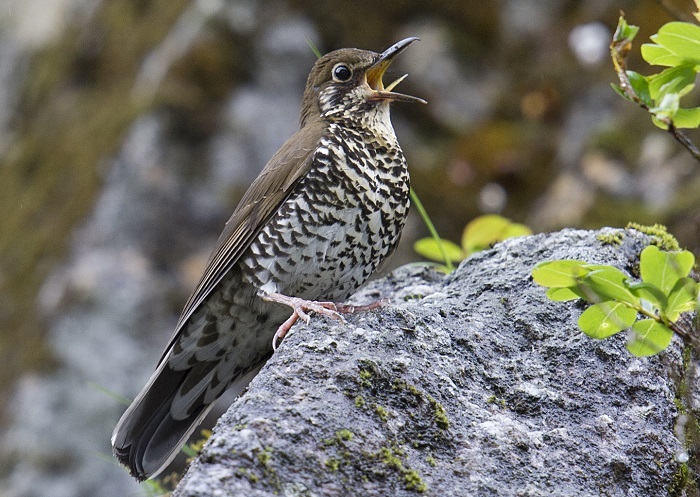A team of scientists from India, China, the US and Sweden has discovered a new species of bird dwelling in the northeastern parts of India and regions adjacent to China. The new found species is a Himalayan thrush. In honor of the famous Indian ornithologist, Salim Ali, it is named “Zoothera salimalii” and common name – Himalayan forest thrush.

Generally, a thrush is a kind of singing bird with a brownish back and specked breast. The search for the Himalayan plain-backed thrush Zothera mollissima began in 2009, believing it as a single species. But, there were two different species said Pamela Rasmussen from the Department of Integrative Biology of Michigan State University and the MSU Museum and coordinator of MSU’s Global Bird Sounds Website; AVoCet.
Adele or Rod Stewart?
Interestingly, the first plain-backed thrush found by the scientists in the coniferous forest had a melodious song. But, the individual ones found later, in the same area on rocky ground above the tree line, had a cacophonic song; harsher and scratchier.

Alstrom, the team leader said that it was exciting to know that the singing features of the same plain-backed thrushes differed so significantly according to their habitats and the elevation of dwelling. There were thus, two species, the first one was christened Zoothera mollissima and the new-found Zoothera salimalii.
Shashank Dalvi, study co-author and Associate of Wildlife Conservation Society said that from an ornithologist’s point of view, the Himalayan forest thrush have musical sounds like Adele, where as the Alpine thrush has sounds like Rod Stewart.
The scientists tried to find similar species from collections in museums of other countries, but it was found that those that could be assigned to either of these two species differed significantly in respect of their plumage and structure.
Rasmussen further added that, their morphological analysis revealed that the specimens in the museum, collected over the last 150 years from the same part of Himalayan forests could be categorized to two groups on the basis of their plumage and measurements.
A further study on plumage, song type, DNA, ecology and structure for the entire range of plain-backed thrush revealed the existence of a third species in Central China; already known and named ‘Sicchuan Forest Thrush” was taken as a sub-species of plain-backed thrush. It had more musical sound, compared to the Himalayan species.
DNA studies show these three species have been genetically separated for several million years leading to their morphological differences and their changes songs. Three museum specimens indicated presence of a yet another species in China; the Yunnan thrush that calls for further studies.
The discovery of the Himalayan thrush is the first of its kind in India since 1949. In comparison, five new bird species have been found every year in South America during the last fifteen years.
Other scientists who contributed to the present study include Chao Zhao (China), Jinzi Xu (Sweden), Shashank Dalvi (India), Tianlong Cai (China), Yuvan Guan (China), Ruiving Zhang (China), Mikhail Kalvakin (Russia), Fumin Lei (China) and Urban Olsson (Sweden)
The research has been published in the current issue of the journal, Avian Research.
More Related Stories,
Himalayan Bird To Get Advanced Breeding Center









2 thoughts on “New Himalayan Singing Bird Discovered”